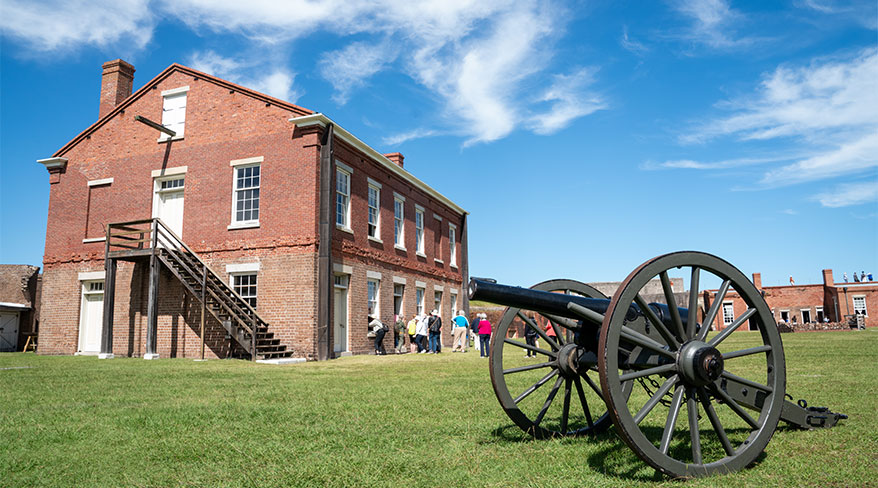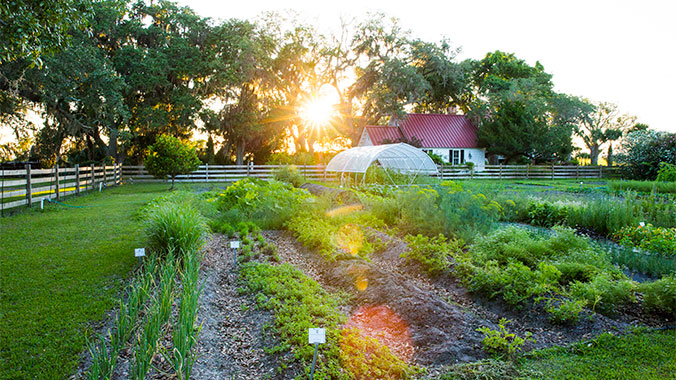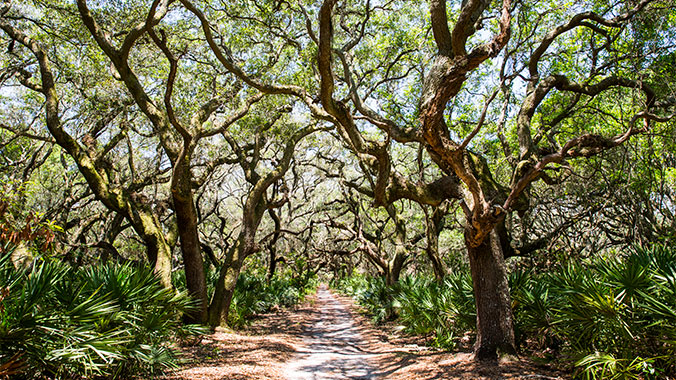A Natural History of Cumberland Island, Georgia
by Carol Ruckdeschel
Having lived on Cumberland Island for more than forty years, Carol Ruckdeschel's goal has been to document present conditions of the island's flora and fauna, establishing a baseline from which to assess future changes. Since the late 1960s, she has witnessed many changes and trends that are often overlooked by those carrying out short-term observations. This compilation of data, along with historic information, presents the most comprehensive picture of the island's flora, fauna, geology, and ecology to date.
This volume will satisfy a general interest in the ecology of Cumberland and other Georgia barrier islands. New information on individual species is presented, contributing to its value as a reference for the Southeast.
Amelia Island
by Rob Hicks Dr (Author), Amelia Island Museum of History
Tiny Amelia Island, in the northeast corner of Florida, was once among the most important ports in the western hemisphere. Before Florida was granted statehood, the island served as an international gateway between Spanish Florida and the English colonies that would later become the United States. Where Spanish monks and pirates once roamed, the island eventually developed into a significant seaport that exported the rich resources of Florida's interior in the late 1800s. This era was known as the Golden Age of Amelia Island and the town located on its north end, Fernandina. The railroad that connected Amelia Island to the Gulf Coast was largely responsible for the Golden Age, as it brought a burgeoning economy and many of the South's most prominent and wealthy figures. Today the island is best known as a resort community but retains the influence and charm of its remarkable past.
Cumberland Island: A History
by Mary R. Bullard
Cumberland Island is a national treasure. The largest of the Sea Islands along the Georgia coast, it is a history-filled place of astounding natural beauty. With a thoroughness unmatched by any previous account, Cumberland Island: A History chronicles five centuries of change to the landscape and its people from the days of the first Native Americans through the late-twentieth-century struggles between developers and conservationists.
Author Mary Bullard, widely regarded as the person most knowledgeable about Cumberland Island, is a descendant of the Carnegie family, Cumberland's last owners before it was acquired by the federal government in 1972 and designated a National Seashore. Bullard's discussion of the Carnegie era on Cumberland is notable for its intimate glimpse into how the family's feelings toward the island bore upon Cumberland's destiny.
Cumberland Island: A Place Apart
by Thornton W. Morris
This book by Thornton Morris, the President of the Conservancy, exists in order to tell, in a personal, and sometimes amusing way, the story of how Cumberland Island was preserved and is now one the our nation's most treasured national seashores. It is a book about the relationship between life and death, a dynamic with which few of us consciously deal in the twenty-first century, but which is a day-to-day issue on Cumberland Island. It tells the story of why Cumberland was saved for future generations and the meaning of this preservation for all Americans.
Cumberland Island: Strong Women, Wild Horses
by Charles Seabrook
In Cumberland Island, Charles Seabrook uses his talent as an award-winning environmental writer to describe the island's natural bounty and to tell its long and intriguing history. You'll meet Catherine "Caty" Greene Miller, the widow of Revolutionary War hero Nathanael Greene and the woman who inspired Eli Whitney to invent the cotton gin. She was also the inspiration behind Dungeness, the 30-room tabby mansion built on Cumberland Island in 1803. Another strong woman who currently resides on the island is Carol Ruckdeschel, a naturalist who was the subject of a John McPhee profile in the New Yorker in 1974. GoGo Ferguson and Carol were great friends until they disagreed on the future of the island. Their ensuing feud reveals the continuing debate among residents, conservationists, and developers about how the island should be managed. In Cumberland Island, Charles Seabrook provides a fascinating look into the history of one of America's greatest natural treasures.
Legendary Locals of Amelia Island
by Rob Hicks Dr
Amelia Island has been host to remarkable people throughout its 500-year history. These people are responsible for giving Amelia the distinction as the only place in the United States to have seen eight different flags. A new railroad followed the Civil War and brought those who sought to take advantage of the burgeoning shipping center. As opportunities waned, the island became a sleepy, blue collar community supported by the local paper mills. Prior to civil rights legislation desegregating the South, Fernandina's American Beach flourished as an African American coastal community. Meanwhile, local visionaries oversaw tight-knit communities and set the stage for the large resorts that came to the island's south end in the 1970s. Today, Amelia Island is a national tourist destination and home to a diverse of community of longtime residents and newcomers, both with remarkable talents and interesting stories to tell.
The Beaches are Moving
by Kaufman and Pilkey
Our oceans are eroding, sinking, washing out right under our houses, hotels, bridges; vacation dreamlands become nightmare scenes of futile revetments, fills, groins, what have you - all thrown up in a frantic defense against he natural system. The romantic desire to live on the seashore is in doomed conflict with an age-old pattern of beach migration. Yet it need not be so. Conservationist Wallace Kaufman teams up with marine geologist Orrin H. Pilkey, Jr., in a evaluation of America's beaches from coast to coast, giving sound advice on how to judge a safe beach development from a dangerous one and how to live at the shore sensibly and safely.
The Big Sand Dune & the Beach Lady on an African American Beach
by Annette McCollough Myers
Broad age range, about an historical presence on Amelia Island: Environmental Activist; Historian; Opera Singer; Unique Character!
The Golden Age of Amelia Island, Revised
by Suzanne Davis Hardee and Kathleen Davis Hardee Arsenault
Late 19th Century history/Adult
Untamed: The Wildest Woman in America and the Fight for Cumberland Island
by
Carol Ruckdeschel is the wildest woman in America. She wrestles alligators, eats roadkill, rides horses bareback, and lives in a ramshackle cabin that she built by hand in an island wilderness. A combination of Henry David Thoreau and Jane Goodall, Carol is a self-taught scientist who has become a tireless defender of sea turtles on Cumberland Island, a national park off the coast of Georgia.
Cumberland, the country’s largest and most biologically diverse barrier island, is celebrated for its windswept dunes and feral horses. Steel magnate Thomas Carnegie once owned much of the island, and in recent years, Carnegie heirs and the National Park Service have clashed with Carol over the island’s future. What happens when a dirt-poor naturalist with only a high school diploma becomes an outspoken advocate on a celebrated but divisive island? Untamed is the story of an American original standing her ground and fighting for what she believes in, no matter the cost.
Yesterday's Reflections II, Nassau County Florida
by Jan H. Johannes, Sr
County history with historic photographs/ Adult
















